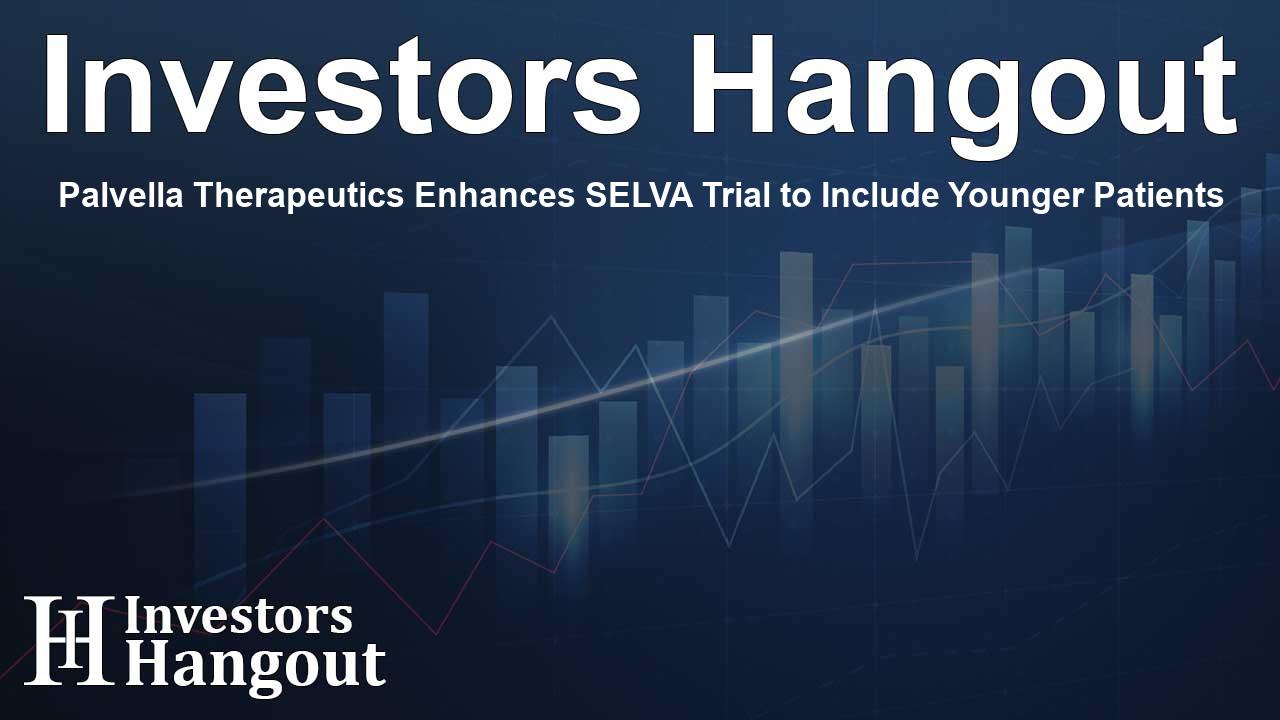Palvella Therapeutics Enhances SELVA Trial to Include Younger Patients

Palvella Therapeutics Expands SELVA Trial for Younger Children
Palvella Therapeutics is committed to addressing the needs of all patients impacted by microcystic lymphatic malformations (microcystic LMs). The company has announced an exciting development in its clinical trials that reflects this dedication.
Inclusion of Younger Patients
In a significant move, Palvella Therapeutics will broaden its Phase 3 SELVA clinical trial to include patients aged 3 to 5 years old. Initially, this trial was limited to participants who were at least 6 years old. This change comes after consultations with the U.S. Food and Drug Administration (FDA), where the agency approved the suggested expansion. This broadened scope is aimed at improving treatment options for younger patients suffering from this rare condition.
About the SELVA Clinical Trial
The SELVA trial is designed to assess the efficacy of QTORIN™ 3.9% rapamycin anhydrous gel (QTORIN™ rapamycin) in treating microcystic LMs. Currently, the trial is seeking to enroll around 40 patients over a period of 24 weeks. It operates as a single-arm, baseline-controlled study, which allows researchers to measure the effects of the therapy based on the initial health status of the participants.
Importance of Early Intervention
According to Dr. Joyce Teng, a prominent investigator involved in the trial, microcystic LMs can lead to numerous health challenges including bleeding, infections, and chronic pain. Early intervention is crucial to mitigating these issues during critical stages of child development. The potential impact of QTORIN™ rapamycin on these younger patients is a promising aspect of this expanded clinical trial.
A Groundbreaking Therapy for Microcystic LMs
Microcystic LMs is a genetically driven disease characterized by severe malformations of lymphatic vessels. These malformations can manifest as persistent lymph fluid leakage and bleeding, and they often lead to recurring infections and hospitalizations. The progression of this condition typically does not resolve spontaneously, which highlights the urgent need for effective treatment options. QTORIN™ rapamycin represents a potential breakthrough as the first approved therapeutic agent for microcystic LMs in the United States.
Regulatory Designations for QTORIN™ Rapamycin
The FDA has acknowledged the potential of QTORIN™ rapamycin by granting it multiple designations, including Breakthrough Therapy Designation, Fast Track Designation, and Orphan Drug Designation. These recognitions underline the urgency of developing new treatments for conditions without existing FDA-approved therapies.
About Palvella Therapeutics
Founded by experts in the field of drug development for rare diseases, Palvella Therapeutics (NASDAQ: PVLA) is at the forefront of creating innovative therapies aimed at genetic skin diseases. The company is currently focused on several therapies using its proprietary QTORIN™ platform, which has the potential for substantial advancements in the treatment landscape for rare diseases. QTORIN™ rapamycin's ongoing investigations through the SELVA trial mark an essential step in fulfilling the unmet needs of patients.
Looking Ahead in Clinical Development
Palvella's commitment to research and development is evident as it explores additional applications for QTORIN™ rapamycin. In addition to the ongoing SELVA trial, a Phase 2 clinical trial known as TOIVA is underway to evaluate its effectiveness in treating cutaneous venous malformations. Through these initiatives, Palvella strives to bring hope and relief to individuals facing the challenges associated with rare genetic conditions.
Frequently Asked Questions
What is the SELVA clinical trial?
The SELVA trial is a Phase 3 study assessing the safety and efficacy of QTORIN™ rapamycin for treating microcystic lymphatic malformations in patients.
Why are younger patients being included in the SELVA trial now?
Palvella Therapeutics expanded the trial to include children aged 3 to 5 years in response to FDA approval, highlighting the need for early intervention in treating microcystic LMs.
What distinguishes QTORIN™ rapamycin as a treatment option?
QTORIN™ rapamycin is positioned to potentially be the first FDA-approved therapy for microcystic lymphatic malformations, addressing a significant unmet medical need.
How does microcystic LMs affect patients?
This condition can lead to severe symptoms such as lymph fluid leakage, bleeding, and recurrent infections, significantly impacting the quality of life and development of affected children.
What other studies is Palvella Therapeutics pursuing?
In addition to the SELVA trial, Palvella is also conducting the TOIVA trial, which explores the use of QTORIN™ rapamycin for cutaneous venous malformations.
About The Author
Contact Kelly Martin privately here. Or send an email with ATTN: Kelly Martin as the subject to contact@investorshangout.com.
About Investors Hangout
Investors Hangout is a leading online stock forum for financial discussion and learning, offering a wide range of free tools and resources. It draws in traders of all levels, who exchange market knowledge, investigate trading tactics, and keep an eye on industry developments in real time. Featuring financial articles, stock message boards, quotes, charts, company profiles, and live news updates. Through cooperative learning and a wealth of informational resources, it helps users from novices creating their first portfolios to experts honing their techniques. Join Investors Hangout today: https://investorshangout.com/
The content of this article is based on factual, publicly available information and does not represent legal, financial, or investment advice. Investors Hangout does not offer financial advice, and the author is not a licensed financial advisor. Consult a qualified advisor before making any financial or investment decisions based on this article. This article should not be considered advice to purchase, sell, or hold any securities or other investments. If any of the material provided here is inaccurate, please contact us for corrections.
